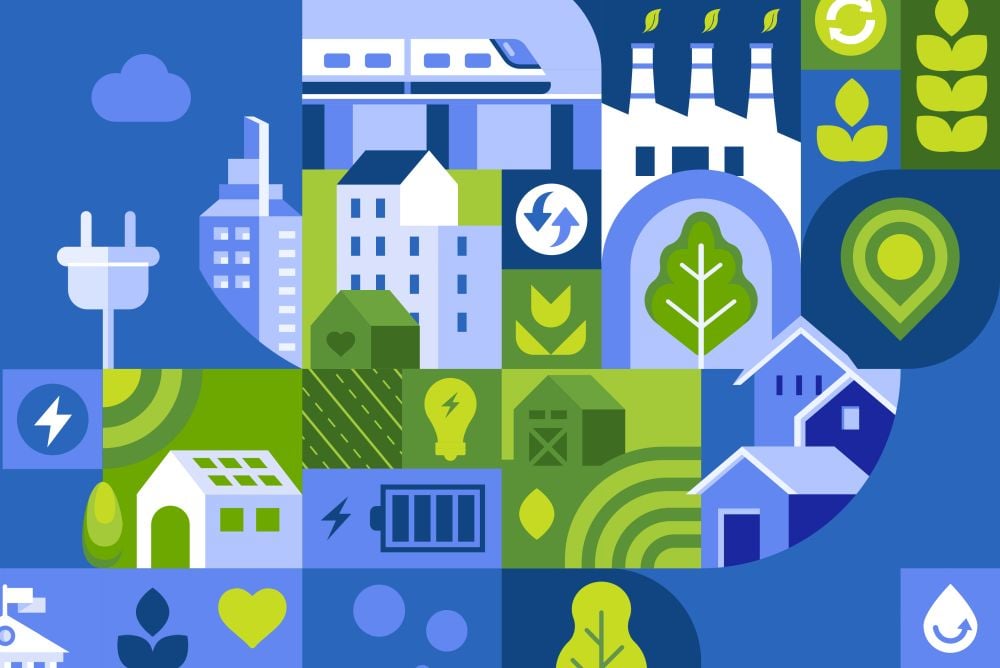The pandemic wreaked havoc on African economies, hampering GDP growth and straining government budgets. The war in Ukraine now threatens to make things much worse, including by disrupting food supplies and compounding inflationary pressures. But when these shocks pass, many African countries will still be struggling with the effects of climate change – and with the advanced economies’ failure to keep their commitments to help the continent cope.
Despite having contributed the least to global warming, Africa is the continent most vulnerable to its effects – a reality that has become impossible to ignore, as extreme weather events exacerbate food insecurity and destroy livelihoods. But most African countries lacked the fiscal space to invest adequately in adaptation even before the pandemic. Now, many are on the brink of debt distress.
Climate action was a key topic at the recent spring meetings of the International Monetary Fund and the World Bank. But somehow the world’s enduring failure to fulfil its climate finance commitments – beginning with the US$100 billion the developed economies pledged to deliver to their developing counterparts every year from 2020 to 2025 – did not get the attention it deserved.
In 2019 – a decade after that pledge was made – rich countries claimed they were approaching the target, having mobilized US$79.6 billion. But even this rather disappointing figure is controversial, with many believing that the numbers are inflated or that some money is counted twice. In reality, the accumulated deficit of various climate-related promises since 2009 is probably already approaching US$1 trillion – and that figure is set to keep growing. It is now estimated that annual contributions will not reach US$100 billion until 2023.
Only a small share of this will go to Africa. In 2016-19, African countries received about US$20 billion annually from the unmet US$100 billion pledge. And other funding sources are hardly picking up the slack. Just 37% of the Green Climate Fund’s portfolio – US$3.3 billion – is invested in Africa. And the Least Developed Country Fund, which supports mostly African countries, has provided a meagre US$437 million to the continent since 2001.
Funding for adaptation has been particularly weak. From 2014 to 2018, African countries received less than US$5.5 billion in adaptation financing, or roughly US$5 per person, per year – well below the estimated need. In fact, African countries are currently meeting only about 20% of their adaptation needs through domestic and international finance. A mere 5% of all flows from international climate funds have been disbursed for locally-based climate-adaptation interventions.
Making matters worse, 57% of the adaptation funding Africa has received was provided in the form of loans, rather than grants. The injustice is obvious: How can rich countries justify forcing poor, often highly indebted countries to cover the costs of adapting to climate hazards they have done little to cause? But this is also a practical problem, because loans for adaptation have a lower disbursement rate than grant-based funding.
This contributes to the very low disbursement ratio for adaptation-related finance in Africa. According to the Stockholm Environment Institute, just 46% of the committed funding for adaptation was disbursed in 2014-18, compared to 56% for mitigation and 96% for all development finance.
The Aid Atlas database presents an even bleaker picture. From 2002 to 2019, funders disbursed just over US$8.1 billion in development finance to Africa for climate adaptation, less than a third of the US$29.2 billion committed. This low disbursement ratio largely reflects barriers to project implementation, such as requirements for co-financing, rigid climate-fund rules, and inadequate programming capacity within countries.
Even if the world fulfilled its climate-financing commitments, it would not be enough. Based on data from the Africa Nationally Determined Contributions Hub, the continent will need US$715 billion for mitigation and US$259 to US$407 billion for adaptation from 2020-2030. The African Group of Negotiators on Climate Change has called for US$1.3 trillion per year by 2030 in financing for developing countries to tackle climate change. Meanwhile, major multilateral development banks have committed a paltry US$38 billion to low- and middle-income countries, with US$9 billion for Sub-Saharan Africa.
Beyond boosting its climate-finance commitments – and delivering on them – the international community must take steps to ensure a just and equitable transition. For example, Africa possesses metals and minerals that are needed to support the clean-energy transition, and boasts huge potential for green hydrogen production. Any effort to tap these resources must minimize the relevant sectors’ social, environmental and climate impact, and advance structural transformation that elevates Africa’s position in global value chains.
A just climate transition requires support in all sectors. For example, South Africa’s agricultural sector is extremely vulnerable to climate change, but highly concentrated, well-resourced, and largely white agro-industrial producers are much better positioned to adapt than rural smallholder farmers. Targeted programmes – supported by international funding – will be essential to protect the livelihoods of those most at risk.
The US$8.5 billion Just Energy Transition Partnership offers a good model. Launched at last year’s United Nations Climate Change Conference in Glasgow, the Partnership will help South Africa accelerate its clean energy transition, with the support of the European Union, France, Germany, the United Kingdom and the United States. The deal will combine new investment in renewables, electric vehicles, and green hydrogen with measures to protect and empower the workers and communities tied to fossil-fuel industries.
Rich countries have reaped massive rewards from environmental destruction. The least they can do is use some of that wealth to support adaptation in countries that have not. Africa cannot afford more broken climate-finance promises.
Carlos Lopes is a professor at the Nelson Mandela School of Public Governance at the University of Cape Town and a member of the Global Commission on the Economy and Climate.
Copyright: Project Syndicate









